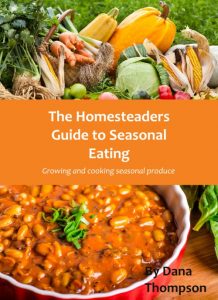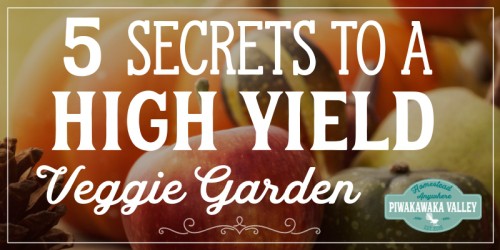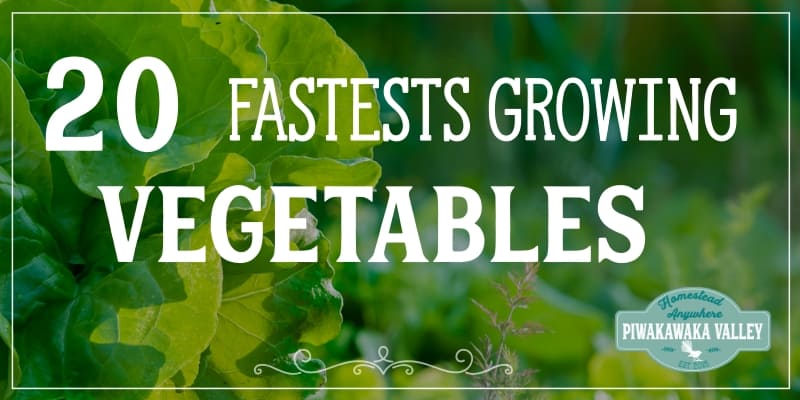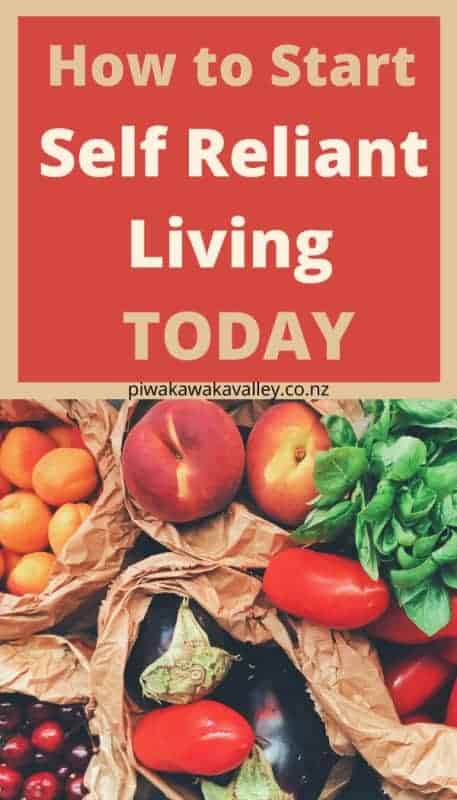This post was most recently updated on April 12th, 2023
In this day of economic uncertainty, many of us long for being self sufficient with our food supply. Alongside this goes the wish to eat cleaner, without the chemical additives and pesticides. This is where homesteading comes into play. Self sufficient living is the way forward for all of us.
Please read: This information is provided for educational purposes only and is not intended to treat, diagnose or prevent any disease. We encourage you to make your own health care decisions in partnership with a qualified health care professional.
This post contains affiliate links, this means at no extra cost to you, we make a commission from sales. Please read our Disclosure Statement
Self sufficient living
Being truly self sufficient is being a producer. Being able to provide for your daily food grown on your own land. Being able to make things that you need, to be self contained, mindful of your impact on the world around you.
Self sufficient living may be a dream for many, but there is no reason why you can’t start along a path toward self sufficiency today. It is a journey rather than a destination.
Homesteading is about being self-reliant and having a self sufficient mindset.
You can have the self-sufficient homestead mindset wherever you happen to live. There are skills you can practice and philosophies that you can embrace, even if you don’t have any land to your name right now (or ever!).
There is not just one definition of self-sufficiency that fits right across the board.
What could self-sufficiency mean for you where you are? It could mean a lot of different things.
So let’s explore what self-sufficiency is and what it could mean for you.
What is Self Sufficiency?
According to dictionary.com, self-sufficiency can mean either:
Self-sufficiency is being able to supply one’s own needs without external assistance.
Or, it could also mean, having extreme confidence in one’s own resources.
This means being self sufficient could mean growing all of your own food, or it could mean that you have amazing self reliance skills and live in the suburbs.
Urban homesteaders can feel confident that they’ve done all that they can to survive whatever comes their way, right where they live.
RELATED: How to improve your food security
You don’t have to go off-grid and live in the middle of nowhere to be a self-sufficient homesteader at heart.
There are so many self reliant things you can do even in an inner city apartment.
Below is a list of 10 self sufficiency skills that you can pick and choose from to start working on to become more self reliant.
Pick one skill and work on that first, once you have that up and running, add a second skill. This is the best way to make these skills a lasting habit and a new self-sufficient way of life for you and your family.
What are the Benefits to Living a Self Sufficient Homestead Life?
1. Food Security
In this uncertain economic time, the price of food continues to rise. There have been a lot of food recalls recently as well. Knowing where your food comes from helps to keep your family both fed, and healthy.
You don’t have to be relying on someone else to provide your food. Every little bit counts – raise some plants on your window sill or go hunting or fishing in the weekend. Food production can be done even in a small backyard homestead. Organic gardening is the best way to take control of your food supply.
Growing herbs for both food and medicine, and learning how to use them helps too. On the upside, most herbs take up very little space in a garden.
Growing a garden, raising chickens for eggs and raising meat rabbits can all be done in a small yard, and with some creative self reliant thinking, you can even raise eggs and meat in apartments by keeping quail.
2. Healthy Food
When you grow something, you know what is in or on it. You can be organic, free range and pasture fed, without the price tag.
Fermenting and canning your own food in glass is a great way of becoming self reliant, while also improving you and your family’s health.
3. Homesteading Saves you Money
We pay for convenience. Modern day life 
That plumber you paid to fix a leaking tap? You could learn how to change a washer, and fix it for less than $1.
Any food that comes in a packet? Guess what, you could make it from scratch for a fraction of what the shop charges you, and you will know what is in it!
A packet of 50-100 heirloom seeds may cost you $3-5 but that money would only buy you 2-3 heads of broccoli from the store.
Embracing the a frugal, self sufficient way of living will help to relieve the burden on your finances.
If you want to save some cash and pay off some debt, homesteading is for you!
4. Leaving a Legacy
When we have children, it is our job to prepare them to cope with whatever may come in life. Training our children to provide for themselves is a lesson in independence, responsibility and self reliance.
Also digging in the dirt is good for you! It helps with self-esteem, and general relaxation and feelings of well-being.
Remember there are no rules about what makes you self sufficient. Anyone who is taking charge of their food sources and providing for themselves qualifies! This is true whether you are in the city, on a quarter acre or on a hundred acres.
Self Sufficient Living Tips: How to Homestead Wherever you are Today.
1. Work out your self sufficient living goals
What do you actually want? Are you happy where you are?
What defines self sufficiency or self reliance for you? Do you want to move to a bigger plot of land, or have you got what you want now?
Be realistic about your current property and its capacity. This is a long-term decision, so don’t rush it.
If you want to move, there are so many things you can be doing in the meantime to learn and prepare for a bigger homestead.
Meanwhile, here are a few things that you can do where you are even if you have a small backyard. My advice is to start small, one thing at a time.
If you are planning out your property, have a look at our permaculture planning article, it will help you work out what to put where at your place.
2. The Ultimate Self Reliance Tip: Start a Garden
The very foundation of providing your own food is gardening. If you aren’t sure where to start – try reading our How to Start a Garden from Scratch series.
If you want a more in depth, vastly more helpful option for growing all your own vegetables – you really should do our Productive Gardener course. We show you exactly how to grow your own veggie garden, and walk through with you for your whole first year of growing.
I always try to use heritage breeds of plants. Heritage plants are higher in nutrients and are better tailored to growing in different environments. Growing heritage varieties means that you can keep your own seeds, so you are not reliant on buying seeds each year.
Growing vegetables from seed is the best way to get heritage plants, and the cheapest option as well. In the US I recommend Seeds for Generations. They are a family based, multigenerational, real deal company.
In New Zealand I have bought many seeds from Carol, she is great to deal with, and Kings Seeds has a range of heritage seeds too.
If you’re considering using your awesome self reliant, homesteading skills in the future to decrease your need for a cash income, look at ways to grow something, somewhere now, today even.
Community gardens are one option, but so is hooking up with someone who might loan you some land. Get creative. Grow planter boxes on your balcony or windowsill. Set up a veggie plot amongst your flower garden. Just do something!
If the weeds are getting you down. I have one word for you:
DO IT.
You really won’t regret it. I promise.
3. Start Canning and Preserving
You don’t have to grow a thing to learn to can things. Get in on the super seasonal specials as they come up and buy in bulk.
I bought 15kg (30lb) of tomatoes and made salsa, canned tomatoes and HUGE amounts of my delicious tomato ketchup.
Find someone with apple trees and learn how to make Apple Cider and then how to use it.
Low acid fruit and vegetables NEED to be pressure canned for your safety.
Read our self sufficiency guide to pressure canning vegetables here.
You can also safely pressure can meat, stocks and milk. This will save space in your freezer and reduce your reliance on electricity.
In order to pressure can food, you’re going to need a pressure canner – your two main options are the All-American pressure canner and the Presto pressure canner – both are workhorses that will last for years.

The All-American is initially expensive and it weighs a lot but it has no parts that need replacing.
The Presto is less expensive and more lightweight (can be used on ceramic cooktops) but it has rubber gaskets that need replacing occasionally.

Those are the only essential differences and both are great canners. I have the Presto and I love it. They even shipped to NZ for me!
Don’t forget other low-cost methods of food preservation, too! Dehydrating, pickling, wine-making, Lacto-fermentation, curing – there are many other ways to preserve food.
I do not recommend freezing as a reliable preservation method unless you are running it on renewable energy.
You cannot rely on electricity in a storm or other such brown-stuff-hits-the-whirly-thing events and you risk losing your whole freezer full of food.
4. From Scratch Cooking
Along with preserving your food, cooking from scratch is one of those self reliant things you can do even in a city apartment. You can start perfecting your cooking skills right now.
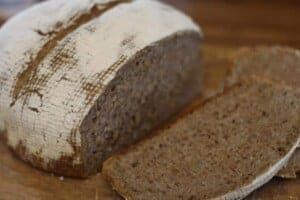
Get some good, homestyle from-scratch dinner recipes under your belt like our pork carnitas.
5. Get yourself some Chickens
Be warned – chickens are the gateway drug to homesteading animals. They are little, easy to care for and are very productive. You can raise a few chickens in the smallest urban yard, or you could raise hundreds on open pasture and sell the eggs or meat.
This is especially so if you get yourself some multi-use dual purpose breeds like Light Sussex or Orpingtons. They lay around 300 eggs per year for the first 2 years, will breed and raise their own young and you can eat the spares at about 6 months of age.
6. Grow some Meat Rabbits
Rabbits are the easiest and most productive animal that you can keep in your backyard for meat. We have a huge section about meat rabbits if you want to read up on them.
You don’t need much land, and as they are considered pets rather than livestock you can have them in the city on your urban homestead. Some people even raise meat rabbits in their basements quite successfully.
During the world wars, and the Great Depression most families had chickens and meat rabbits to be more self sufficient and make sure their family would not go without protein. Plus chickens make short work of family food scraps.
7. Eat Seasonally
Self sufficiency means avoiding the supermarket as much as possible. Obviously, if you are growing your own food, then it will be, by default, seasonal.
Preserving food during the growing season allows you to have some out of season produce during the rest of the year, but fresh produce should be seasonal, whether you are growing it yourself or buying it.
Another effective way to eat seasonally is to shop at the local farmers market. If there are foods that you cannot grow yourself, supporting locals who can is a brilliant way to improve community resilience.
8. Reduce your Electrical Reliance
Electricity costs. A lot. It is very relying-on-someone-elsey (I would say unempowering… but… yeah… puns). The amount you pay is somewhat out of your control. To counteract this, and to become more self sufficient, you can look at alternate sources of power and have your own energy supply on site, preferably with back-up batteries. Solar energy is one of the best ways to become self sufficient and they are a renewable, sustainable energy source.
- Try to get a house with a wood burner, or better yet a wood-fired cooker like ours!
- Get a wet back and radiators or central heating. The initial cost is high, but the running costs are less.
- Install a solar power system, either as a top up, or disconnect from the grid totally, or at least some solar panels to heat your hot water.
- Cook outside in the summer over a well-contained fire or a solar cooker.
- Swap your appliances for low usage ones.
- Use LED bulbs.
- Turn off your hot water if you aren’t using it.
- Invest in a Kill Switch that turns everything off when you leave the house or room.
- Have shorter showers or fewer showers. I think we shower far too often these days anyways, but that is a rant for another day.
- Learn to can or dry your surplus fruit, veggies and meat so you don’t need such a big freezer.
9. Bring back the Art of Bartering to improve community resilience and save money
Bartering used to be a lot more common than it is today. Swapping something you have for something you want is a great way to build community, as well as to save you some money.
- Use your spare eggs and vegetables to trade for goods and services.
- Get to know your neighbors and share tools and resources.
- Get involved in community gardens and seed swaps.
- Support cottage industries by shopping at the local markets.
10. Pick up some Productive, Self Sufficient Hobbies
Other homesteading skills that make great hobbies that you may like to hone include:
Knitting and sewing
Hunting
Fishing
DIY and building your own things
Herbal medicines and treating illnesses naturally
Mechanics and maintaining your own tools
Camping, hiking and bushcraft
Another area of self-sufficiency that you should consider is to think of ways you can have your own businesses. You could try selling eggs, selling livestock, becoming a consultant, being a freelance writer, starting your own blog or many other ways to make money homesteading.
Being self sufficient – The Real Needs For You and Your Family
To be truly self sufficient and self reliant, you will need to ensure that you have the following sorted:
Shelter
How you decide to live out your self sufficient life is totally up to you. You may choose to get a mortgage and live in a big farm house, rent in the city, or go debt free and live in a camper in the middle of nowhere.
Whatever you decide, you will need somewhere to live. Generally the cheaper a house is to build, the more physical labor you will have to put in to building it yourself.
Water
No man can live without water. You will need a self sufficient supply of water – depending on where you live, this might be collecting rain water, tapping in to a well, or using water from a stream.
Ideally, whichever you choose, make sure that it can not be contaminated by others. If you do not own enough land to make this possible, at least make sure that you have water stored in case of an emergency.
Installing a rain barrel to collect rain water, even if it is just to be used to water the garden, is an easy thing to do, and is a great way to ensure you have an emergency supply of water on hand.
Food
Becoming more self sufficient with your food is a process, learn to grow a garden, keep some meat and egg animals and shop locally when you can. One thing most people can manage is to plant some fruit trees, or at least some berry plants to invest in your food producing future. Start a compost pile to reuse your waste and turn it into wonderful food for your garden plants.
To be fully self sufficient with your food may involve a change of diet, or moving to a very large property. Grains need large fields to grow sufficient quantities for a family. Large animals need plenty of room to graze. You can be mostly self reliant while still buying some foods in bulk if you need to.
Power
It is hard to get away from these days, we use huge amounts of energy to power our lifestyles. You could consider going off grid by setting up wind, solar or hydro and consider the amount of gas you are using from day to day.
Money
It is also very hard to get away from needing money. Even the most isolated, frugal person will need to buy something sometime. Keep some cash on hand, look for ways to profit from what you are already doing, or think about something that you could add to your day that would bring in some spare coin.
Try and pay your debts off as fast as you can, a debt-free life has so many more options!
Self Sufficient Living In New Zealand
We are very blessed in our country to be surrounded by so much green, fertile space. Our climate is perfect for growing food almost totally year-round (once you know how!). We are all just 1 or 2 degrees of separation away from knowing a farmer to get fresh, grass raised meat from.
Getting a pressure canner here is not impossible – I got mine from Amazon, I know others that got theirs from Australia.
We are legally allowed to collect rainwater, and most places get enough sun to run solar. The self sufficient lifestyle for the self sufficient person is achievable if you start small and keep working towards your ultimate goals. Rome wasn’t built in a day, but it was built from a strong plan with motivated leadership.
What are you doing to develop your self sufficient homesteading skills? Let me know in the comments below!
Please Pin and share with your friends!


